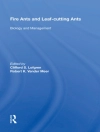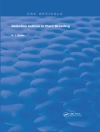Great attention has been paid to reduce the use of conventional chemical fertilizers harming living beings through food chain supplements from the soil environment. Therefore, it is necessary to develop alternative sustainable fertilizers to enhance soil sustainability and agriculture productivity. Biofertilizers are the substance that contains microorganisms (bacteria, algae, and fungi) living or latent cells that can enrich the soil quality with nitrogen, phosphorous, potassium, organic matter, etc. They are a cost-effective, biodegradable, and renewable source of plant nutrients/supplements to improve the soil-health properties. Biofertilizers emerge as an attractive alternative to chemical fertilizers, and as a promising cost-effective technology for eco-friendly agriculture and a sustainable environment that holds microorganisms which enhance the soil nutrients’ solubility leading a raise in its fertility, stimulates crop growth and healthy food safety.
This book provides in-depth knowledge about history and fundamentals to advances biofertilizers, including latest reviews, challenges, and future perspectives. It covers fabrication approaches, and various types of biofertilizers and their applications in agriculture, environment, forestry and industrial sectors. Also, organic farming, quality control, quality assurance, food safety and case-studies of biofertilizers are briefly discussed. Biofertilizers’ physical properties, affecting factors, impact, and industry profiles in the market are well addressed. This book is an essential guide for farmers, agrochemists, environmental engineers, scientists, students, and faculty who would like to understand the science behind the sustainable fertilizers, soil chemistry and agroecology.
Об авторе
Inamuddin, Ph D, is an assistant professor at the Department of Applied Chemistry, Zakir Husain College of Engineering and Technology, Faculty of Engineering and Technology, Aligarh Muslim University, Aligarh, India. He has extensive research experience in analytical chemistry, materials chemistry, electrochemistry, renewable energy, and environmental science. He has worked on different research projects funded by various government agencies and universities and is the recipient of multiple awards, including the Fast Track Young Scientist Award and the Young Researcher of the Year Award for 2020, from Aligarh Muslim University. He has published almost 200 research articles in various international scientific journals, 18 book chapters, and 120 edited books with multiple well-known publishers.
Mohd Imran Ahamed, Ph D, is a research associate in the Department of Chemistry, Aligarh Muslim University, Aligarh, India. He has published several research and review articles in various international scientific journals and has co-edited multiple books. His research work includes ion-exchange chromatography, wastewater treatment, and analysis, bending actuator and electrospinning.
Rajender Boddula, Ph D, is currently working for the Chinese Academy of Sciences President’s International Fellowship Initiative (CAS-PIFI) at the National Center for Nanoscience and Technology (NCNST, Beijing). His academic honors include multiple fellowships and scholarships, and he has published many scientific articles in international peer-reviewed journals. He is also serving as an editorial board member and a referee for several reputed international peer-reviewed journals. He has published edited books with numerous publishers and has authored over twenty book chapters.
Mashallah Rezakazemi, Ph D, received his doctorate from the University of Tehran (UT) in 2015. In his first appointment, he served as associate professor in the Faculty of Chemical and Materials Engineering at Shahrood University of Technology. He has co-authored in more than 140 highly cited journal publications, conference articles and book chapters. He has received numerous major awards and grants from various funding agencies in recognition of his research. Notable among these are Khwarizmi Youth Award from the Iranian Research Organization for Science and Technology (IROST), and the Outstanding Young Researcher Award in Chemical Engineering from the Academy of Sciences of Iran. He was named a top 1% most Highly Cited Researcher by Web of Science (ESI).












